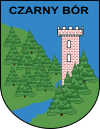Grzędy, Lower Silesian Voivodeship
Grzędy [ˈɡʐɛndɨ] (German: Konradswaldau) is a village in the administrative district of Gmina Czarny Bór, within Wałbrzych County, Lower Silesian Voivodeship, in south-western Poland.[1] It lies within the Central Sudetes, approximately 3 kilometres (2 mi) south of Czarny Bór, 11 kilometres (7 mi) west of Wałbrzych, and 76 kilometres (47 mi) south-west of the regional capital Wrocław.
Grzędy | |
|---|---|
Village | |
 Grzędy | |
| Coordinates: 50°44′44″N 16°08′21″E | |
| Country | |
| Voivodeship | Lower Silesian |
| County | Wałbrzych |
| Gmina | Czarny Bór |
The nearby Wojaczów Castle was erected at the behest of the Silesian duke Bolko I the Strict in the 13th century. Then meant as a fortress of his Duchy of Jawor near the border with Bohemia, it became less important after the Jawor line of the Silesian Piasts became extinct and their territories were incorporated into the Lands of the Bohemian Crown in 1368.
Before 1945 the area was part of Germany. After World War II the region was placed under Polish administration by the Potsdam Agreement under territorial changes demanded by the Soviet Union. Most Germans fled or were expelled and replaced with Poles expelled from the Polish areas annexed by the Soviet Union.
Notable residents
- Hans-Ulrich Rudel (1916–1982) a German ground-attack pilot during WWII and prominent neo-Nazi activist in Latin America
References
